As chemistry departments in the UK have been closing, shrinking and merging in recent years, similar pressures are increasingly affecting American universities too. There is now serious concern that chemistry programmes in the US could face a similar fate. This comes as the chairs of three dozen US chemistry departments are warning in a letter in Science that they are ‘deeply concerned’ about the state of their subject.
The chemistry departments that produce these innovations rely on stable research funding
Letter in Science from 36 chairs of chemistry departments
The authors note that federally funded academic research in chemistry has led to the groundbreaking cancer drug paclitaxel, lithium-ion batteries and advanced materials, including polymers like polypropylene carbonate. These discoveries, and others like them, have created entirely new sectors in the US economy.
‘The chemistry departments that produce these innovations rely on stable research funding to maintain laboratories, support faculty and student researchers, and sustain critical infrastructure,’ the letter reads. ‘As chairs of US-based chemistry departments, we are deeply concerned about federal decisions to decrease overhead rates, reduce scientific funding, lay-off programme managers at scientific agencies, and restrict diversity, equity, accessibility and inclusion initiatives.’
The letter’s signatories, which include the heads of chemistry departments at Stanford University, Caltech, the Massachusetts Institute of Technology and several University of California campuses, argue that these shifts ‘threaten the strength of the US research enterprise and the nation’s role as an economic and technological leader’.
UK chemistry frailties
In the UK, the University of Bradford has followed other institutions in announcing that it will close its chemistry courses this year. Also this year, Cardiff University announced plans to merge its chemistry department with two other schools and the University of East Anglia proposed cutting full-time faculty, including 22 from science.
Last year, the University of Hull confirmed it would shut its chemistry department, Aston University said it will close its undergraduate chemistry and applied chemistry courses, while Reading’s chemistry department was on the chopping block until it was given a last minute reprieve in November 2024.

These cutbacks at UK universities, which followed the closure of Bangor University’s chemistry department in 2019 and Brighton’s undergraduate chemistry programme in 2020, were attributed to several factors, including financial challenges, declining student interest, the cost of teaching chemistry and fewer international students. With similar stresses being placed on US universities, chemistry departments are not safe there either.

The University of Akron in Ohio was considering a controversial proposal to merge several chemistry-related programmes but its leadership decided against it in April. The plan, which aimed to address the institution’s large financial deficit and declining student numbers in this field, would have combined the university’s world-renowned school of polymer science and polymer engineering with its chemical, biomolecular and corrosion engineering department and its chemistry department.
But the university determined that this so-called ‘retrenchment proposition’, under which roughly half of the polymer science and polymer engineering faculty would be laid off, can be avoided because voluntary redundancies have made this unnecessary.
‘The school will not go forward with retrenchment and is not combining these three schools…but faculty that agreed to leave are not going to be replaced,’ says Mark Soucek, the interim director of the University of Akron’s school of polymer science. ‘The implication is that the only way we’re going to replace these faculty is if we can fundraise ourselves – instead of getting endowed research chairs we will need endowments to be able to hire new faculty.’
[Cuts] will put these smaller and mid-range chemistry departments at risk
Mark Soucek, University of Akron
Soucek, who anticipates losing one or two more faculty members over the next couple of years, says he is currently in talks with potential industrial and philanthropic partners. ‘If people leave or retire and they are not replaced, eventually the unit disappears,’ he says.
‘I have a friend who was a professor that got fired in the UK and Hull department of chemistry,’ Soucek notes. ‘I think we need to adjust by looking into new funding models because just entirely relying on federal or state money seems difficult.’
Soucek points out that the polymer science school is highly rated and very prestigious internationally, but a typical chemistry department in a small or mid-sized US university doesn’t have the ability to recruit from all over the world. He suggests that such institutions are the most at risk of following the UK’s lead and shuttering their chemistry programmes.
Adding to the pressure on US universities, the Trump administration has said it wants to make swingeing cuts to science. Soucek warns that dramatic budget cuts slated for the National Science Foundation (NSF), the National Institutes of Health (NIH) and other science agencies will ‘have a vast impact’ on research infrastructure at his institution and others. ‘This will put these smaller and mid-range chemistry departments at risk,’ he says.
The Trump administration’s current budget proposal would slash the NSF’s budget by an unprecedented 55% and shrink chemistry support through the maths and physical sciences programme by 75%. Overall funding at the NIH would be cut by more than 43% under Trump’s budget request.
After SUNY
Beyond the University of Akron, several other universities in the US have come close to winding up their undergraduate chemistry and biochemistry programmes, including the State University of New York (SUNY) in 2023. ‘The university was suffering from a major drop in state support for SUNY four-year colleges … plus a general drop in enrolment, especially during and after the pandemic,’ recounts Martin Walker, chair of SUNY Postdam’s chemistry department.

He says enrolment changes during the Covid-19 pandemic led to a big decline in students applying to SUNY’s undergraduate chemistry degree. Consequently, in September 2023 the school’s new president announced the closure of chemistry and biochemistry programmes, along with about 10 others.
We are still under a certain level of threat, but things have certainly improved
Martin Walker, SUNY Postdam
‘We appealed the decision for three of the four programmes in our department – chemistry BA, biochemistry BS and physics BA,’ Walker recounts. ‘We had very few BS students at that time, and that degree also included a few low-enrolled classes, so we chose to focus on saving the other programmes.’ One tenured faculty member was let go, and the physics bachelor’s degree was also lost, he recalls.
The chemistry programmes at SUNY were saved because the school was able to demonstrate that nearly all its courses served students on other degrees, including biology and environmental science. ‘Even if they closed down all the chemistry programmes, they would need to keep on the same number of faculty to teach the same courses as service courses for other departments,’ Walker says.
‘We are still under a certain level of threat, but things have certainly improved,’ Walker tells Chemistry World. Meanwhile, however, the chemistry department has lost two faculty and so has the physics department, which Walker calls ‘a big blow’.
Elsewhere in the US, Warren Wilson College in North Carolina announced the elimination of its chemistry degree in the 2023–2024 academic year, according to Langdon Martin, who co-chairs the college’s biology and chemistry department. In the last decade or so, Warren Wilson only had, on average, about six students per year total studying both chemistry and biochemistry, Martin notes. The school continues to offer a biochemistry degree, as well as key chemistry courses like general chemistry, organic chemistry and physical chemistry.
In November 2023, Fresno Pacific University in California warned of a financial black hole due to ‘declining enrolment revenue’ and made the decision to close 16 degrees, including chemistry, which altogether accounted for just 3% of students. Roughly 10% of faculty were fired.
The next month, Christian Brothers University (CBU) in Tennessee announced that chemistry was among the dozen programmes that would close at the end of the 2023–2024 academic year. CBU also revealed that it would eliminate 28 faculty positions. The university blamed low enrolment numbers and said the money would go to degrees with more students.
Then, in June 2024, the West Virginia University Institute of Technology also shut five degrees, including chemistry. This action was reportedly intended to address low enrolment and a $45 million (£33 million) deficit.
Chemistry consolidation ‘a big plus’
Meanwhile, Indiana University’s medical school will merge its biochemistry and molecular biology department with its pharmacology and toxicology department on 1 September, to create a new biochemistry, molecular biology and pharmacology department within the medical school.

‘The dean made this decision in part because there had been three or four chairs in four or five years in the department of molecular pharmacology and toxicology for various reasons, and he thought that the combined department would be more viable and competitive nationally, and have more of a critical mass,’ explains Michael Weiss, who chairs the department of biochemistry and molecular biology until a new chair of the combined department is selected.
This decision, he notes, was made prior to any financial difficulties associated with the Trump administration cancelling funded research projects, moving to slash science agency budgets and capping indirect research costs at 15% for grantees at the NIH, NSF and Department of Energy.
Although faculty members have been encouraged to improve grant productivity over the last five years, there were two tragic deaths of senior faculty members in biochemistry within the same three-year period who had extensive portfolios. ‘The loss of these two major scientists certainly affected our scientific standing and the critical mass of very senior leadership [in biochemistry],’ Weiss says.
Weiss calls the consolidation at Indiana University’s medical school ‘just a big plus’, and suggests that nothing significant is lost by combining chemistry-related departments.
Others, like Ramamoorthy Ramesh, the vice president for research at Rice University in Texas who is also a materials scientist, see the upside of this consolidation trend as well. ‘Not every university on the planet, in the UK and the US for example, should have a chemistry department,’ he states. ‘What you’re witnessing, I think, is just this correction in the process.’
But his colleague Angel Martí-Arbona, who chairs Rice’s chemistry department, argues that smaller chemistry departments that bring in less money are also crucial. ‘They fulfil an incredible and important role in educating our students and supplying or keeping the pipeline of Stem professionals running,’ he states. ‘These are the future leaders of our nation, these are the people that are going to build the next generation of vehicles, cars, airplanes, electronics, medical treatment, the new science and technologies that we are not aware of now that will be available in the years to come.’
Smaller universities at risk
‘This is not an enterprise for only the big universities, this is not an enterprise of only the top universities,’ Martí continues. ‘As a community, we will have to think about how we help smaller universities that might be imperilled and might be facing challenges right now.’
Many in academia are also concerned that current immigration policies could lead to fewer international students coming to study and work in US chemistry departments. These policies have included terminating the visas of more than 1000 foreign students studying or working at US universities without substantive explanation, expanded visa screening for overseas students that will vet their social media activities and blocking Harvard University from enrolling international students. The latter has been temporarily paused by a court order.
International student interest in US postgraduate programmes has dwindled in the first quarter of 2025, according to a StudyPortals analysis. The data reveals that enrolment has fallen by more than 40% from January, when President Trump took office.
Tariff troubles
Additionally, there is concern that the Trump administration’s tariffs will make chemistry a more expensive subject.
Tinglong Dai, a global supply chains researcher at Johns Hopkins University, agrees. ‘With NSF funding already under severe pressure – and existential-level cuts looming – these tariffs could be the last straw for many chemistry departments,’ he warns. ‘When the cost of basic lab equipment and reagents jumps 25% or more, departments are forced to make painful tradeoffs,’ Dai continues. ‘Research slows, students lose opportunities, and the entire system becomes more fragile.’
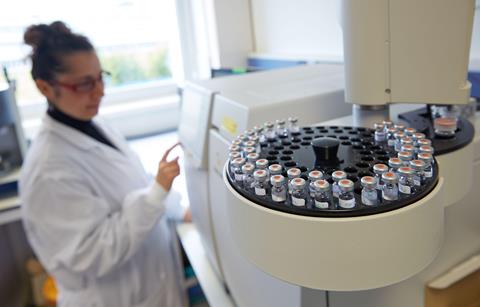
He suggests that the ‘25% or more’ figure might be too conservative. ‘With China as a key supplier, the impact is likely higher, but Chinese suppliers may be able to absorb some of the added costs,’ Dai explains.
Chemjobber, a US chemist who works in the chemical manufacturing industry, says the supply chain for analytical chemistry instruments is complex. ‘Waters and Agilent high-performance liquid chromatography (HPLC) machines – those have American branding – but we all know that the electronics are Chinese and the actual physical parts of the instrumentation probably have a global supply chain,’ he says. ‘Yes, those are going to get more expensive, but how much more expensive I don’t know.’
Most of Trump’s tariffs remain active. The average tariff on Chinese goods still stands at more than 50%, as of 11 June.
These tariffs compound the overall shift that appears to be occurring in US academic chemistry. ‘The number of students taking general chemistry and organic chemistry will always be high because those are service courses that are foundational and provide students with a broad understanding of chemical principles for fields like medicine,’ says Donna J Nelson, a chemist and former president of the American Chemical Society who is a fellow at the Massachusetts Institute of Technology. ‘But other courses – like analytical, inorganic and physical chemistry – will be taken by chemistry majors mostly, and as there are fewer and fewer students in those classes it is harder and harder to justify the labs and the faculty.’
With thanks to Donna J Nelson, former president of the American Chemical Society, for helpful discussion, suggestions, information and references.

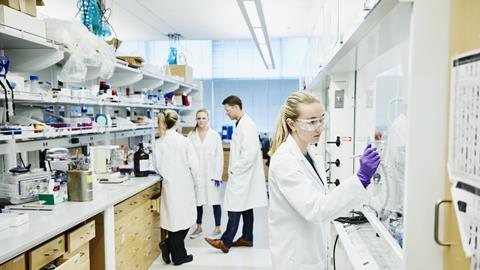




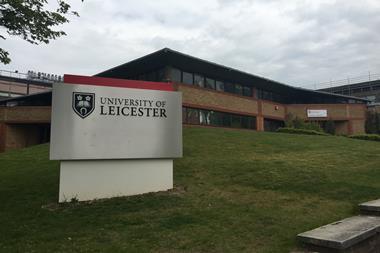


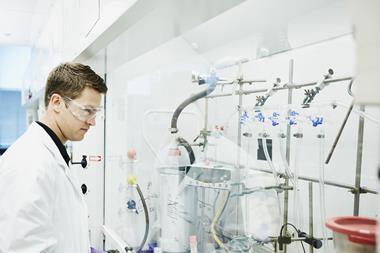





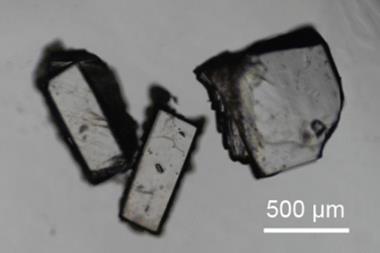


No comments yet